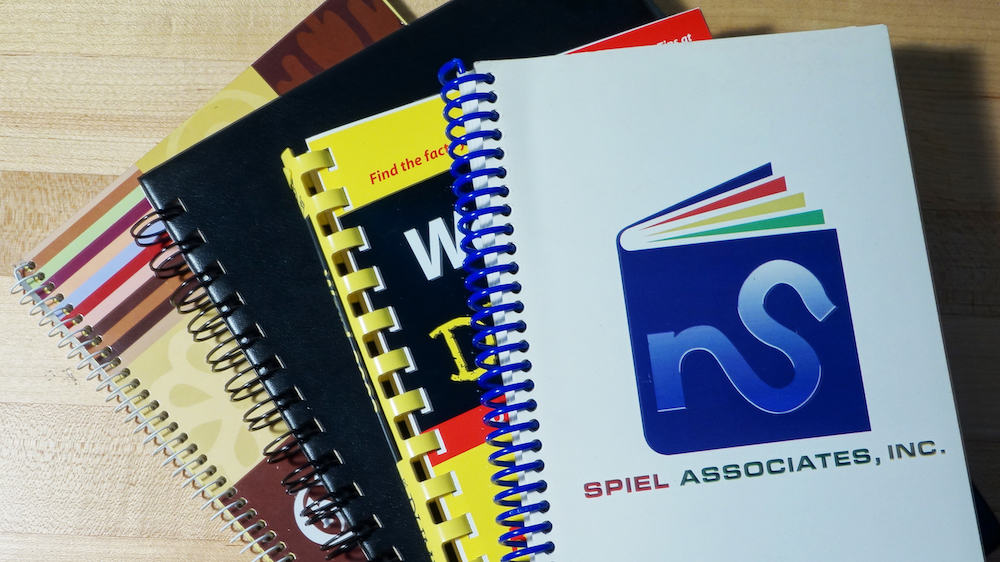Spiral Binding
Depending on the automatic binding machine you purchase, you can bind anywhere from 300 to 4,000 books per hour. But how do you decide if you need a coil binding machine or automatic wire binder? What are the differences between these types of bindings anyway?
It’s likely that you’ve seen these types of bindings on instruction manuals or reports. While many companies have made the switch to exclusively online content, print is still a massive industry and, in fact, users find print to be 59% more engaging than online-only sources.
The types of mechanical binding machines that companies use are largely dependent on their page numbers and distributions. When it comes to finding the right type of binder, you need to know the difference between each.
So, first things first: With either plastic or metal, there is a specific finished look that a producer may want depending on the type of publication they are binding.
Plastic coils come in a wider variety of colors, but some printers believe wire binders create a more professional look.
What Is Double Loop Binding?
Double loop binding uses exclusively metal wiring, which many believe looks classier. These types of bindings are used most often for formal reports and the like.
Two loops pass through each hole, as the namesake suggests, and can take a lot less time to coil, if fully automatic machinery is used. With the help of the right machines, double loop booklets can be rapidly produced for massive audiences. If you need to print tens of thousands of books per hour, this can be a major advantage.
Spiral Binding
The only difference between spiral binding and coil binding (sometimes called plastic spiral), is the material. Spiral binding refers to metal spiral rather than plastic. This is a type of binding that is becoming more and more rare each day. Automatic coil binding machines can bind books much faster than the old fashioned spiral binders. Spiral binders cannot feed plastic and vice versa. Plastic coil gives you far more options for colors.
Although it can take longer, coil binding is much more durable and lasts longer than double loop binding, even if it doesn’t look as sharp to some printers. Using an automatic coil binder is much more useful, however, for more heavy-use items like notebooks, catalogs, or any other booklet that you would use on a regular basis.
Regardless, either binding method has its place and can be used to make a sleek, functional booklet. When producing a high number of booklets on a regular basis, it is economical to purchase a wire or coil binding machine for on-site production, to make the binding process go much more smoothly.
If you have any more questions about our wire or coil binding machines, contact us today and let us know how we can help!



